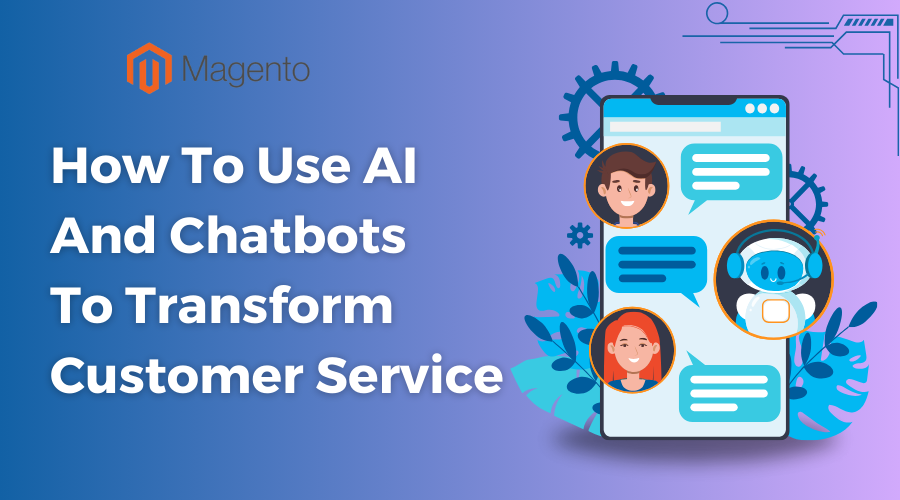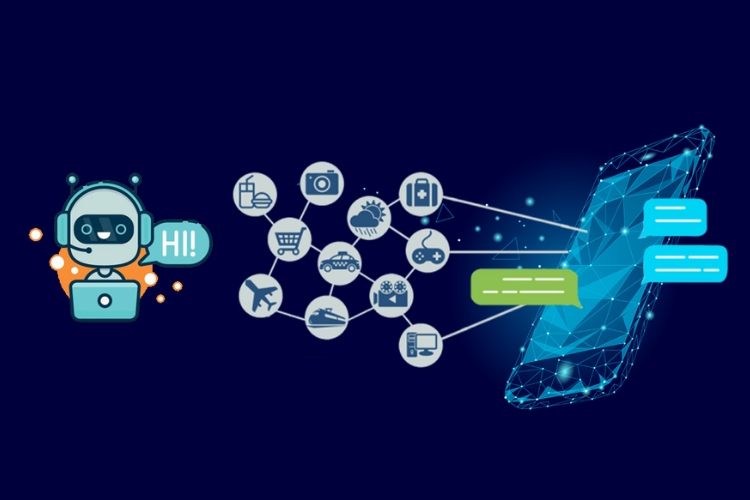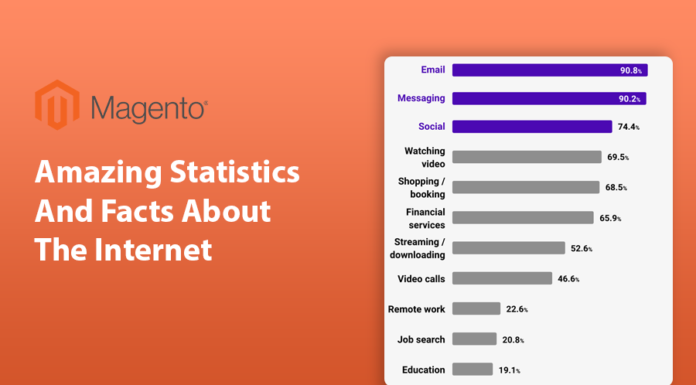
Customer service is a crucial aspect of the dynamic eCommerce landscape, as after-sale service helps in retaining customers. With so many advancements digitally, customers have also started to expect more from eCommerce brands, which in turn has led to the introduction of Artificial Intelligence and chatbots. AI and chatbots are now being incorporated by businesses to help them change the way they used to interact with online customers so as to meet their expectations.
Table of Contents
I. The importance of customer service in eCommerce
As we know, eCommerce can not work without customer service, as customer service helps connect businesses with customers virtually. Also, eCommerce being a customer-centric business, customer loyalty is the most essential aspect for becoming successful. Customers satisfied with customer service not only come back for more, but they also spread word-of-mouth about the business to their friends and family.
The advent of AI and chatbots in the eCommerce industry has caused a series of digital changes where effective tools are now being used by businesses for efficient customer service, streamlined operations and enhanced sales. Now, we will talk about the significance of AI and chatbots in the eCommerce landscape and how they are changing the way operations used to be done.
II. Understanding AI in Customer Service
Nowadays with so many changes in the digital world AI has started revolutionizing various aspects of business operations and one such aspect is customer service. So before going deeper in the applications of AI let’s go through the basics.

2.1. What is Artificial Intelligence (AI)?
Artificial Intelligence can be defined as the ability of a machine to imitate human intelligence for performing specific tasks like decision-making, learning and problem-solving. In the case of eCommerce, learning an Artificial Intelligence course is the best way to gain valuable insights by understanding customer behavior and then making data-driven decisions.
2.2. AI in Customer Service: An Overview
Nowadays, AI is being used in almost all aspects of eCommerce, be it offering personalized product recommendations to customers or using predictive analytics for inventory management. In the context of customer service, businesses like CDR Writers Australia, are using AI to offer 24/7 customer support, streamline basic tasks, and derive customer data for making informed decisions.”
2.3. Benefits of Implementing AI in eCommerce
eCommerce businesses utilizing AI for their operations gain a plethora of benefits, such as better productivity, personalized shopping experiences for customers, less spending and real-time detection of frauds. If a business wants to stay competitive in today’s dynamic digital landscape, then it is necessary to avail of these benefits.
III. The role of Chatbots in customer service
In the context of customer service the use of chatbots has risen rapidly which is why to have a better understanding let’s take a look at what are chatbots and what are their types.

3.1. What are chatbots?
Chatbots can be defined as computer programs that imitate human interactions with the end-user either through text or voice. In the context of customer service, chatbots are the most essential AI-based solutions that are used to deal with enquiries, provide information and perform tasks.
3.2. Types of Chatbots in customer service
There are 2 Chatbots types in eCommerce’s customer service. Let’s take a look and get the core assets:
# 1. Rule-Based Chatbots
These kinds of chatbots are designed to obey predefined instructions and can be used for simple tasks like dealing with customer queries and answering frequently asked questions.
2. AI-Powered Chatbots
AI-based chatbots, unlike rule-based chatbots, make use of machine learning and natural language processing algorithms to get an understanding of the context, take part in complex interactions and, with time, improve themselves.
3.3. How Chatbots improve customer service
By offering 24/7 customer support, chatbots assist businesses in reducing response times and offering consistency in engaging with electronic buyers, thereby increasing customer satisfaction. Apart from that, by using chatbots for doing such tasks, human agents get more time to work on complex tasks that can’t be done without human intelligence.
IV. Real-World AI and Chatbots Applications
Now let’s take a look at the real-world applications of AI.
#1. AI-Powered Personalization
One of the most used real-world applications of AI is gathering customer data for personalisation. By offering insights into customer interactions, AI-based algorithms assist in providing personalized product recommendations and email campaigns and offering flexible pricing based on customer data.
#2. Chatbots in Customer Support
In the case of customer support, chatbots are used for handling regular queries, dealing with issues and offering constant support, thereby providing seamless customer experiences.
#3. Virtual Shopping Assistants
This is one of the most trending real-world applications of AI, which assists customers throughout their customer journey by guiding them towards desired products and offering alternative suggestions.
#4. Automated Order Tracking
By utilizing AI in order management systems, businesses free customers from checking their order status again and again, as AI algorithms already provide regular updates about purchases without any hassle.
V. Implementing AI and Chatbots in eCommerce
There exist three major steps for implementing AI and chatbots in eCommerce that are given below:

#1. Data Collection and Analysis
The first step involves gathering and going through customer data in order to understand what aspects can be enhanced by using AI.
#2. Choosing the Right AI Tools
The second step involves finalizing AI-based tools that resonate with the eCommerce brands’ needs and goals.
#3. Training Chatbots Effectively
The final step requires businesses to rigorously train the chatbots to enhance their abilities as well as precision.
VI. How to measure customer service’s success?
There exist various ways to measure the success of implementing AI and chatbots to customer service, some of which have been given below:
6.1. Key Performance Indicators (KPIs)
Various key performance indicators are used to measure the success of AI and chatbot implementation in eCommerce customer service. Some of the crucial KPIs include customer satisfaction score, resolution rate and response time.
6.2. Analyzing Customer Feedback
Going through customer feedback assists businesses in gaining valuable insights about AI-based solutions, which can then be used to make rectifications so that, in future, they meet customer expectations.
6.3. Iterative Improvements
Regular rectifications are required by businesses in order to make AI and chatbot solutions adjust to the varying needs of different customers as well as changes in technology.
VII. Future Trends
Just like chatbots, various other trends are soon going to change the business operations in the eCommerce world. So let’s go through three such trends for a better understanding of the changes that are going to happen soon.

#1. Voice-Activated Shopping Assistants
Voice-based assistants such as Google Assistant and Alexa are on a roll, and soon, they will change the way customers engage with eCommerce platforms.
#2. AI-Powered Visual Search
In recent times, visual search has become the go-to approach for tech-savvy individuals who look for desired products by directly uploading product images.
#3. AI-Generated Content
The content field has completely changed after the recent introduction of AI-based tools like ChatGPT and Bard, which can craft any form of content you require. This is why various eCommerce websites like Ubuy Vietnam and Google Shopping are utilizing AI-generated content for product descriptions and generic blogs to not only upscale their productivity but also utilize their workforce for more complicated tasks.
VIII. Conclusion
With all the technological advancements going on around the world, the eCommerce industry is also on the verge of changing the way it operates in terms of customer service. By introducing technologies like AI and chatbots, businesses have opened the way towards less spending and more customer satisfaction.
This is why understanding the significance of implementing such solutions to the operations and the challenges associated with them has become a must for all eCommerce brands in order to stay ahead of the competition. Overall, it can be said that implementing AI and chatbots in eCommerce operations can guide businesses towards success.
Author Bio
| Fahad Khan is a Product Manager and digital marketing enthusiast who works at Ubuy Technologies. Content marketing, PPC, email, and social media marketing are among his areas of expertise. He has been exploring the field of digital marketing to share his pearls of wisdom with the whole world. He enjoys working on different niches and creating valuable content for readers. |












![[SALE OFF] Discount 30% All Premium Extensions On Christmas And New Year 2025 christmas-and-new-year-2025](https://landofcoder.b-cdn.net/wp-content/uploads/2024/12/christmas-and-new-year-2025-1-218x150.png)






